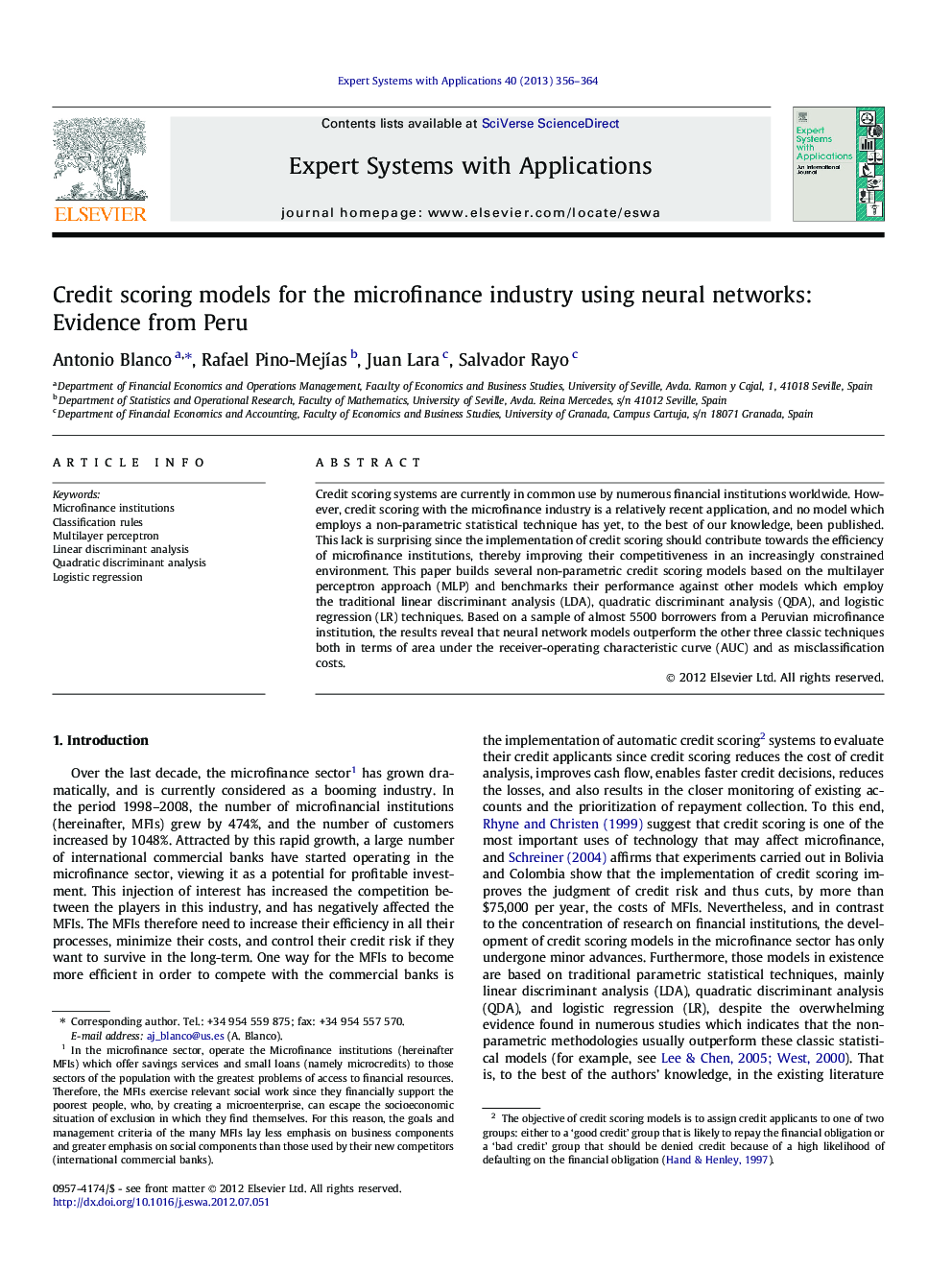| Article ID | Journal | Published Year | Pages | File Type |
|---|---|---|---|---|
| 384222 | Expert Systems with Applications | 2013 | 9 Pages |
Credit scoring systems are currently in common use by numerous financial institutions worldwide. However, credit scoring with the microfinance industry is a relatively recent application, and no model which employs a non-parametric statistical technique has yet, to the best of our knowledge, been published. This lack is surprising since the implementation of credit scoring should contribute towards the efficiency of microfinance institutions, thereby improving their competitiveness in an increasingly constrained environment. This paper builds several non-parametric credit scoring models based on the multilayer perceptron approach (MLP) and benchmarks their performance against other models which employ the traditional linear discriminant analysis (LDA), quadratic discriminant analysis (QDA), and logistic regression (LR) techniques. Based on a sample of almost 5500 borrowers from a Peruvian microfinance institution, the results reveal that neural network models outperform the other three classic techniques both in terms of area under the receiver-operating characteristic curve (AUC) and as misclassification costs.
► Multilayer perceptron credit scoring models work well in our data set from the microfinance industry. ► Multilayer perceptron-based models outperform logistic regression and linear and quadratic discriminant analysis. ► Microfinance institutions that apply multilayer perceptron credit scoring models will achieve a competitive advantage. ► The multilayer perceptron credit scoring model with the highest performance uses regularization procedures. ► A freely available software, the R system, can be used to fit these models.
